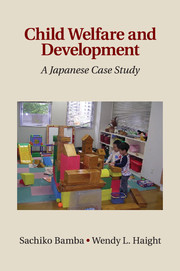Book contents
- Frontmatter
- Contents
- Tables and Figures
- Acknowledgments
- 1 Child-rearing at a Residential Child Care Institution
- 2 Japanese Contexts and Concepts
- 3 The Research Program
- 4 A Developmental Goal for Maltreated Children
- 5 Challenges to Maltreated Children’s Ibasho Creation
- 6 Socialization Practices Underlying Ibasho Creation
- 7 Children’s Lives and Experiences of Ibasho and Mimamori
- 8 Mr. Watanabe’s Responses to the Intervention
- 9 Reflections on Some Challenges of Field Research
- 10 The Emerging Child Welfare Context of Jidou Yougo Shisetsu
- 11 Conclusion: Some Lessons for Culturally Sensitive Child Welfare
- References
- Index
- References
References
Published online by Cambridge University Press: 07 October 2011
- Frontmatter
- Contents
- Tables and Figures
- Acknowledgments
- 1 Child-rearing at a Residential Child Care Institution
- 2 Japanese Contexts and Concepts
- 3 The Research Program
- 4 A Developmental Goal for Maltreated Children
- 5 Challenges to Maltreated Children’s Ibasho Creation
- 6 Socialization Practices Underlying Ibasho Creation
- 7 Children’s Lives and Experiences of Ibasho and Mimamori
- 8 Mr. Watanabe’s Responses to the Intervention
- 9 Reflections on Some Challenges of Field Research
- 10 The Emerging Child Welfare Context of Jidou Yougo Shisetsu
- 11 Conclusion: Some Lessons for Culturally Sensitive Child Welfare
- References
- Index
- References
- Type
- Chapter
- Information
- Child Welfare and DevelopmentA Japanese Case Study, pp. 199 - 212Publisher: Cambridge University PressPrint publication year: 2011



